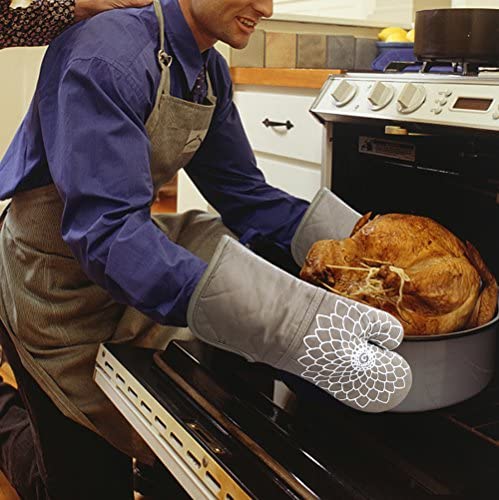Oven Mitts: How to Choose a Material
Oven mitts are an essential part of any kitchen, as they protect your hands from burns and other injuries when handling hot dishes, pots, and pans.
However, not all oven mitts are created equal, and choosing the right material is crucial to ensure maximum safety, comfort, and durability. In this article, we’ll discuss the most common materials used in oven mitts and their pros and cons, so you can make an informed decision.
- Silicone
Silicone is a popular material for oven mitts because of its excellent heat resistance and durability. Silicone oven mitts can withstand temperatures up to500°F without melting or degrading, making them ideal for high-temperature cooking methods like baking or grilling.
Silicone mitts are also waterproof and easy to clean, as they can be washed with soap and water or even tossed in the dishwasher. They are usually textured to provide a better grip on slippery surfaces, and some models come with additional features like non-slip coatings or extended cuffs for extra protection.
- Cotton
Cotton is a classic material for oven mitts, as it is soft, comfortable, and breathable. Cotton mitts are usually made of thick, quilted layers that provide good insulation against heat, but may not be as heat-resistant as silicone or other synthetic materials.
Cotton mitts are also easy to wash and maintain, as they can be machine-washed and tumble-dried. They may come with additional features like silicone grips or hanging loops for convenience.
- Neoprene
Neoprene is a synthetic rubber material that is often used in wetsuits and other water-resistant gear. Neoprene oven mitts offer excellent heat resistance and waterproofing, making them a great choice for handling hot liquids or steam.
Neoprene mitts are usually fitted and flexible, allowing you to grip and maneuver hot items with ease. They may also come with additional features like textured palms or extended cuffs for added protection.

- Kevlar
Kevlar is a high-strength synthetic fiber that is known for its exceptional heat resistance and cut protection. Kevlar oven mitts are usually made of multiple layers of Kevlar fabric, which can withstand temperatures up to500°F and protect against cuts and abrasions.
Kevlar mitts are also lightweight and flexible, allowing you to handle hot items with precision and control. They may come with additional features like silicone grips or extended cuffs for enhanced grip and protection.
- Leather
Leather is a natural material that offers good heat resistance and durability, making it a popular choice for oven mitts. Leather mitts are usually made of thick, high-quality leather that can withstand temperatures up to400°F.
Leather mitts are also stylish and comfortable, as they conform to your hands and provide a good grip on hot items. They may come with additional features like hanging loops or decorative stitching for added convenience.
In conclusion, choosing the right material for your oven mitts depends on your specific needs and preferences. If you prioritize heat resistance and durability, silicone or Kevlar may be your best bet. If you prefer comfort and breathability, cotton or leather may be more suitable. Neoprene can offer a good balance between heat resistance and flexibility, but may be more expensive. Consider the pros and cons of each material and choose the one that best fits your cooking style and budget.